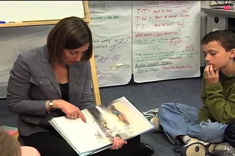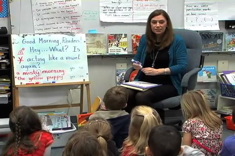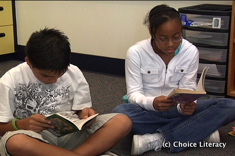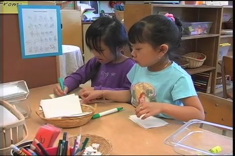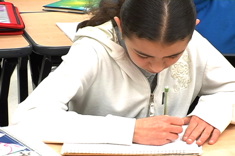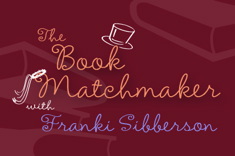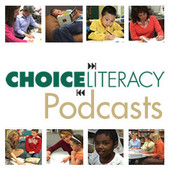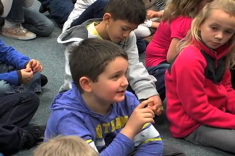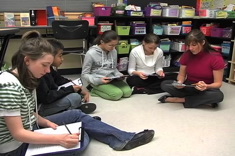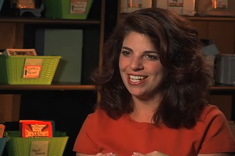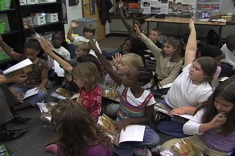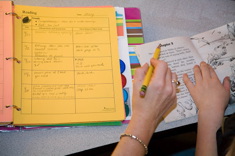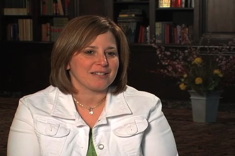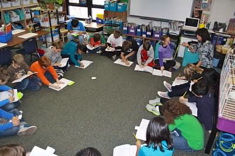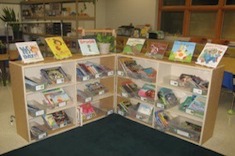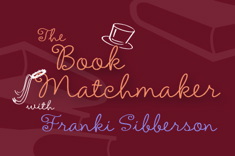Library
Choice Literacy Articles & Videos
The Choice Literacy library contains over 3,000 articles and 900 videos from 150+ contributors. Classic Classroom and Literacy Leadership subscribers have access to the entire library. Content is updated continuously, with five to six new features published each week.
Latest Content
Off the Dance Floor and Onto the Balcony: Getting the Big Picture in Schools
In the day-to-day triage of our schools and the sense of urgency that pushes us to always be accountable for every minute of the day, it is understandable that we tend to forget to pause to think about our larger goals. No one wants to “waste time.” This activity helps everyone keep the big picture in mind.
Language in the Classroom: Using a Recorder as a Teaching Resource
Ruth Shagoury provides tips and strategies for analyzing language in the classroom.
Coaching for the Test
Two teachers are disappointed in student assessment results, but they have very different approaches to tackling the problem. Heather Rader shares her role as a mentor in assisting her colleagues.
Ways to Collaborate With Your School Librarian
Teachers and school librarians would often love to collaborate more, but time is limited. After working for years as both a classroom teacher and school librarian, Franki Sibberson writes from experience as she shares practical suggestions for collaborating with school librarians.
Planning Small Groups to Teach Phonetic Skills
The gap between a child learning a phonetic rule and actually being able to apply it is one that often vexes teachers. Clare Landrigan and Tammy Mulligan find systematic planning and routines for focused small-group work help many of their colleagues succeed in their phonics instruction.
On Compassion
You’re a sucky teacher!” How would you respond if a student hurled those words at you? Katie Baydo-Reed shares a deeply honest and personal account of the year early in her career when she developed a corrosive relationship with her students, and what she learned from the experience about compassion.
Photovoice: Exploring Content Literacy with Images
As Suzy Kaback explores the question “How does your expertise function?” she explains the power of Photovoice and details its use in K-12 classrooms.
Linking Morning Message, Poetry, and Word Learning
Second-grade teacher Linda Karamatic has been starting her morning with a message for years. The morning message is just one part of her daily opening that reinforces community.
Literacy Rights and Responsibilities
Something bad was happening in Katie Doherty’s middle school classroom—it was time to rebuild the class community with a reality check.
Preschool Writing Center
In this video from Melissa Kolb’s preschool classroom, children work in the writing center. Melissa explains how she routinely changes the supplies in the center to spark interest in students and make connections to their experiences.
Writing and Publishing Book Reviews with Middle School Students
What teenager doesn't enjoy critiquing everything in the world? Erin Ocon puts that judgmental passion to good use in her classroom with a book review assignment.
Book Matchmaker: New Books for Intermediate Readers
From humor to novels in verse, Franki Sibberson shares her top picks for intermediate readers in this Book Matchmaker.
Book Matchmaker: Characters Across the Grades
In this installment of Book Matchmaker, Franki Sibberson provides a range of books for teaching character development in fiction for grades 3-5 students.
Jennifer Allen on Working with Veteran Teachers (PODCAST)
Jennifer Allen has developed some innovative support systems for veteran teachers. She shares her insights in this podcast.
Our Learning Goals: Planning at the Start of the Year
As educators, we are always learning and growing. We asked colleagues and Choice Literacy contributors to share with us the goals they set this year.
Teaching Students Retelling Strategies
Retelling is an essential skill for readers, and it’s one that is crucial for success on most state exams too. In Part 1 of a two-part series, Clare Landrigan and Tammy Mulligan share strategies and sample lessons.
Teaching Blogging to Second Graders
You’re never too young to blog, as Katie DiCesare demonstrates with her 2nd graders.
“The Wrath of Guess Jeans”: Reading, Writing, and Cliques in Middle School
In this first video in a three-part series, Katie Doherty leads her 6th graders through a response activity. The text they are reading was written by a middle school student over a decade ago, and its themes of popularity and belonging still ring true for students.
More Literacy Keepsakes to Carry Home at the End of the School Year
Choice Literacy readers share more of their favorite end-of-year gifts for students to make and take home.
Choosing Mentor Texts for Reading
In this quick take video, Aimee Buckner explains her criteria for selecting mentor texts for small-group, individual, and whole-class instruction.
Choosing 5th Grade Read Alouds for the New Year
So many wonderful choices, so little time! Karen Terlecky makes her selections for a year of 5th grade read alouds.
Coaching Out of Chaos: Helping New Teachers Establish Management Systems
The #1 issue for many new teachers is management. Heather Rader shares how she tactfully assisted a novice teacher who needed help.
Life on the Edge
"Life on the Edge" compares the energy and purpose of birds in a nest to daily life in classrooms. It's the perfect metaphor for the fast pace of our teaching lives.
Next Steps: Thinking about Retelling During Reading
Retelling is an essential skill for readers, and it’s one that is crucial for success on most state exams too. In Part 2 of a two-part series, Clare Landrigan and Tammy Mulligan share strategies and sample lessons in this installment.
Balancing Assessments Through Better Classroom Notes
Clare Landrigan and Tammy Mulligan explain how literacy coaches can validate and support teachers by helping them refine their classroom notetaking skills.
Reading Preferences: Social, Pleasurable, and Sometimes Awkward
Karen Terlecky connects an honest appraisal of her reading habits with an unvarnished look at her 5th grade students.
Quick Takes: Advice on Book Hogs
In this quick take video, Franki Sibberson gives advice for dealing with "book hogs" — those students who try to grab any new book when it appears in the classroom library.
Beginning with the End in Mind: Planning Ahead for Closing Activities
Choice Literacy readers share their favorite end-of-year activities that circle back to events from the start of the school year.
Creating a Kindergarten Classroom Library
Mandy Robek finds herself overwhelmed when moving from a 3rd grade to kindergarten classroom. Her therapy? Rolling up her sleeves and designing a kindergarten classroom library.
Book Matchmaker: Teaching Point of View
In this installment of Book Matchmaker, Franki Sibberson provides a range of books for teaching point of view for grades 3-5 students.
Browse Content By
Type
Category
- Assessment Tools
- Big Fresh Archives
- Booklists
- Choice Numeracy
- Classroom Design
- Common Core
- Community Building
- Conferring
- Content Literacy
- Digital Literacy
- English Language Learners
- Equity
- Family Relations
- Free Samples
- Guiding Groups
- Leadership
- Literacy Coaches
- Mentor Texts
- Minilessons
- New Teacher Mentors
- Podcasts
- Poetry
- Quote Collections
- Reading Strategies
- Self Care
- Struggling and Striving Learners
- Talking and Listening
- Teacher Study Groups
- Teaching Reading
- Teaching Writing
- Word Study and Vocabulary
Author
- Melissa Quimby
- Nawal Qarooni
- Gwen Blumberg
- Julie Cox
- The Lead Learners
- Hannah Tills
- Josie Stewart
- Ruth Metcalfe
- Mallory Messenger
- Becca Burk
- Jodie Bailey
- Vivian Chen
- Mary Brower
- Tiffany Abbott Fuller
- Stephanie Affinito
- Ruth Ayres
- Leigh Anne Eck
- Heather Fisher
- Shari Frost
- Julie Johnson
- Suzy Kaback
- Gigi McAllister
- Shirl McPhillips
- Melanie Meehan
- Cathy Mere
- Debbie Miller
- Tara Barnett and Kate Mills
- Tammy Mulligan
- Dana Murphy
- Bitsy Parks
- David Pittman
- Brenda Power
- Heather Rader
- Matt Renwick
- Mandy Robek
- Christy Rush-Levine
- Gretchen Schroeder
- Jen Schwanke
- Brian Sepe
- Katherine Sokolowski
- Stella Villalba
- Jennifer Vincent
Grade Level
Choice Literacy Membership
Articles
Get full access to all Choice Literacy article content
Videos
Get full access to all Choice Literacy video content
Courses
Access Choice Literacy course curriculum and training





